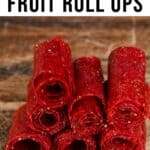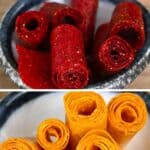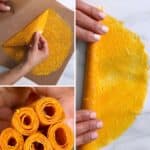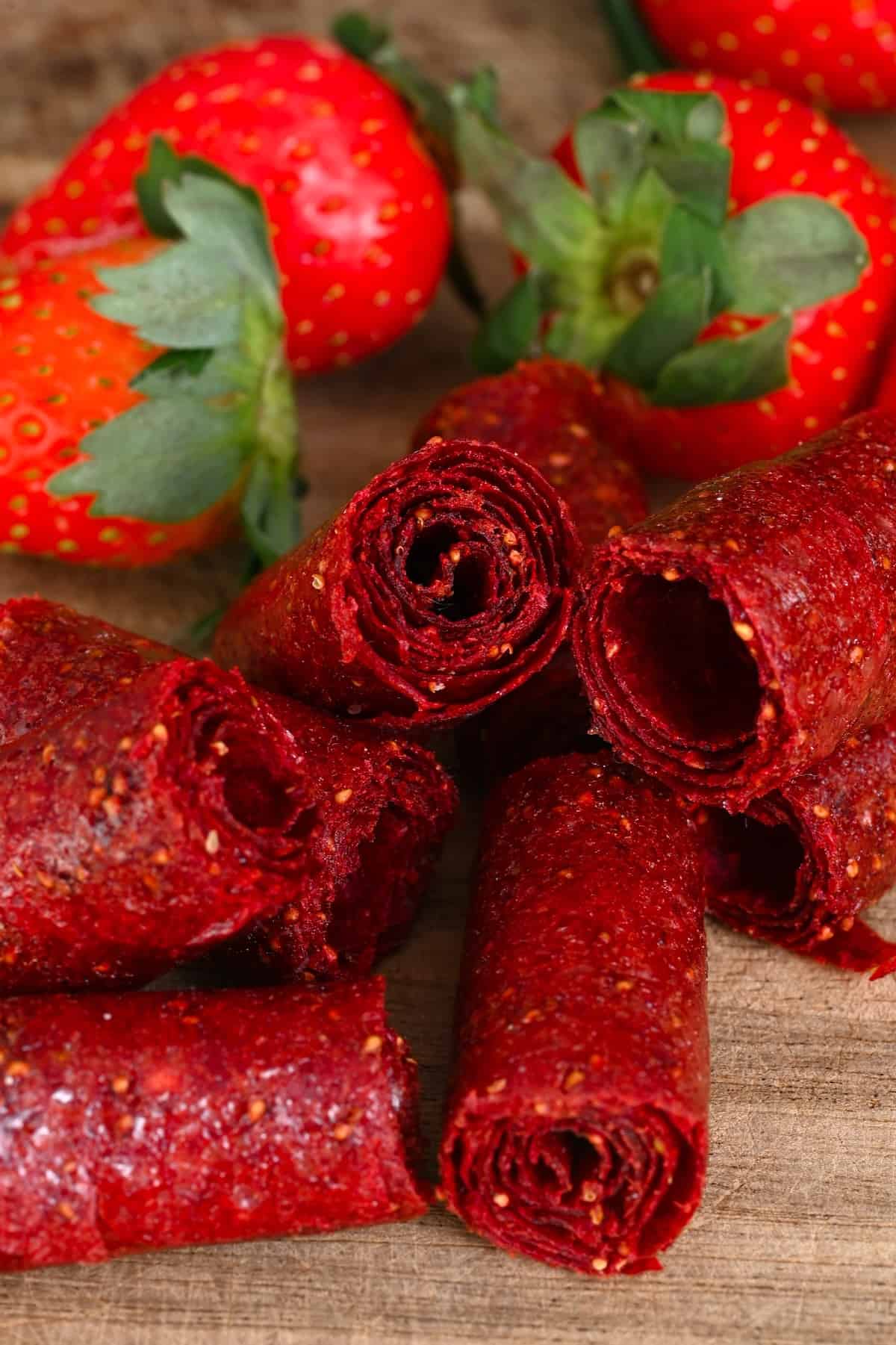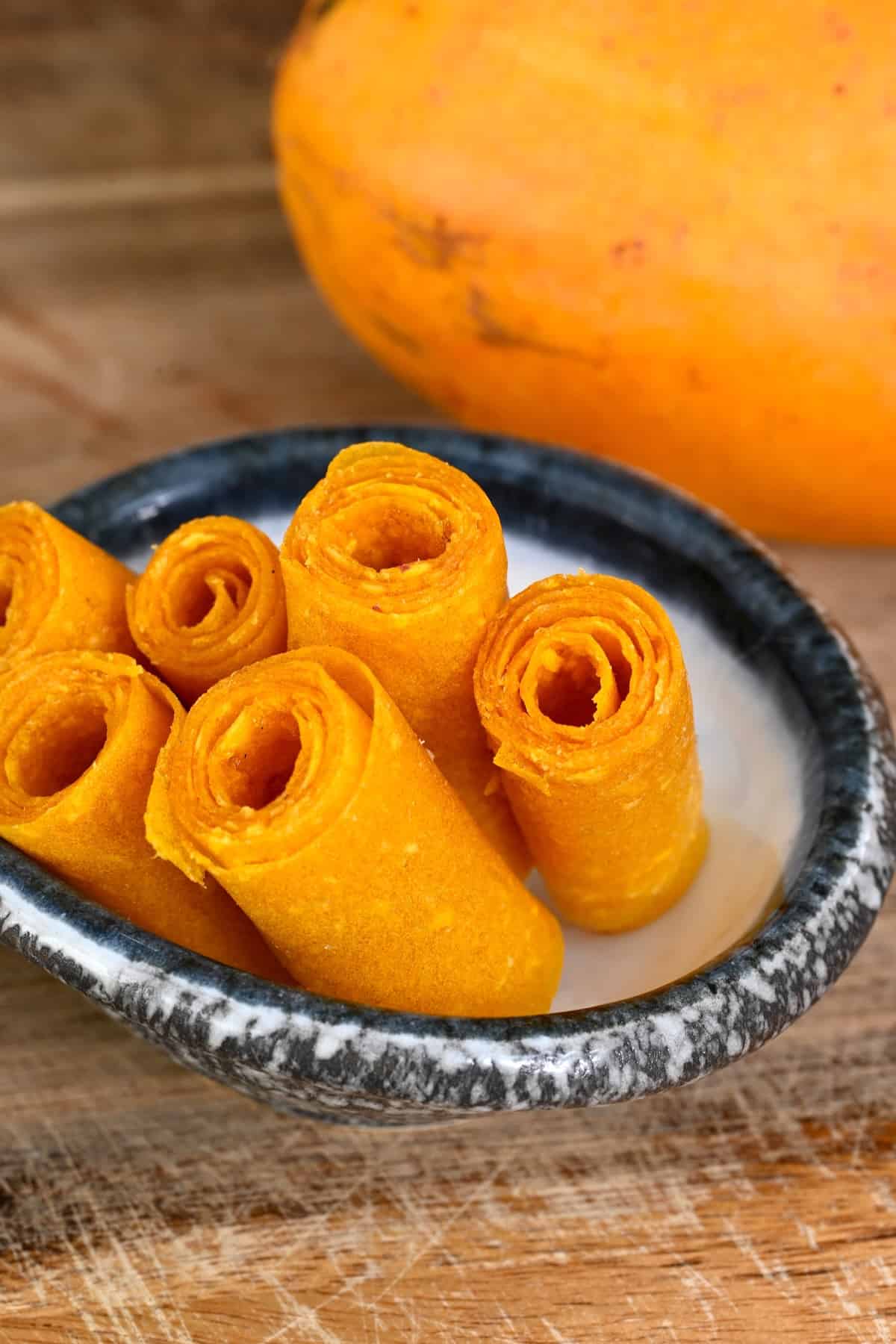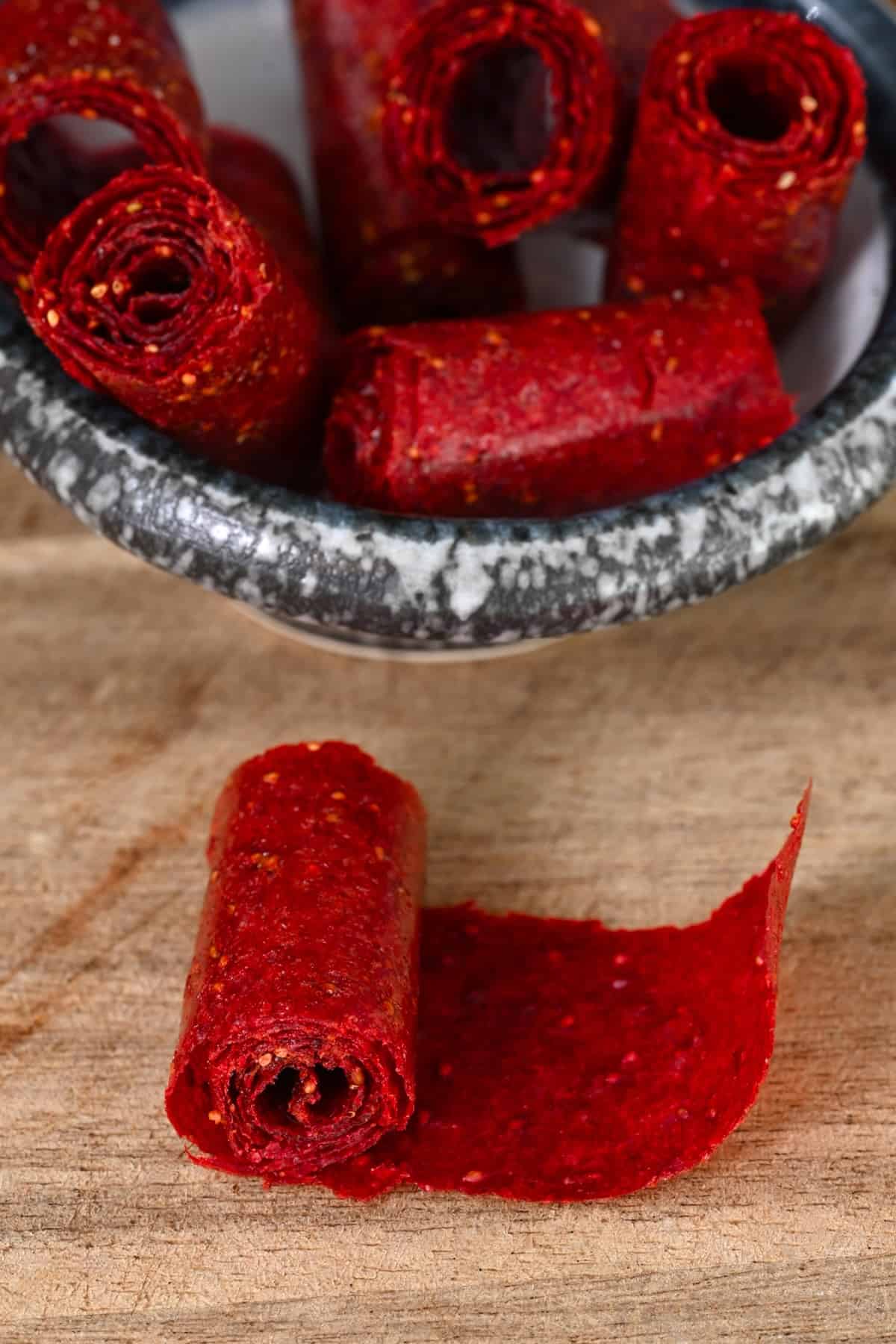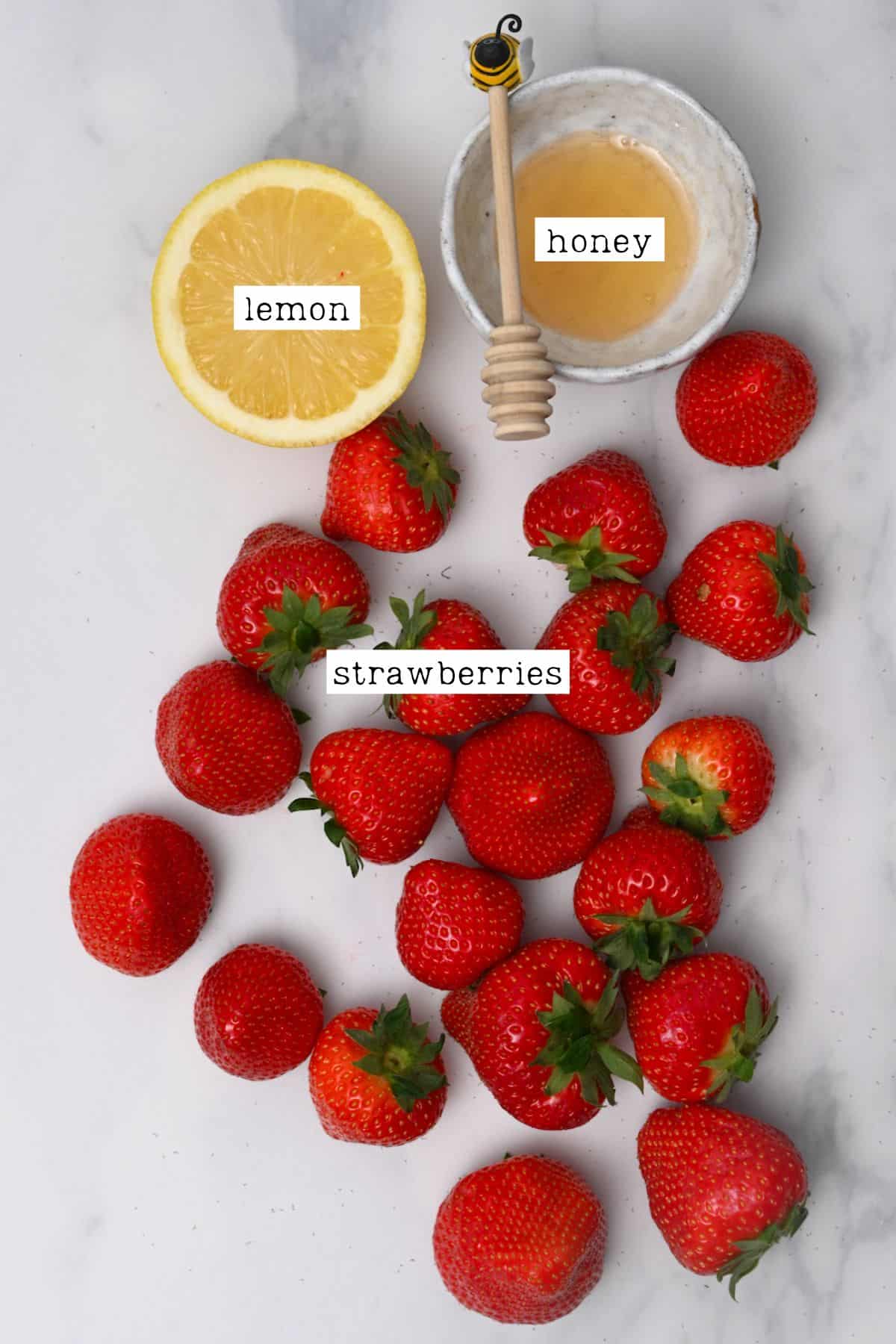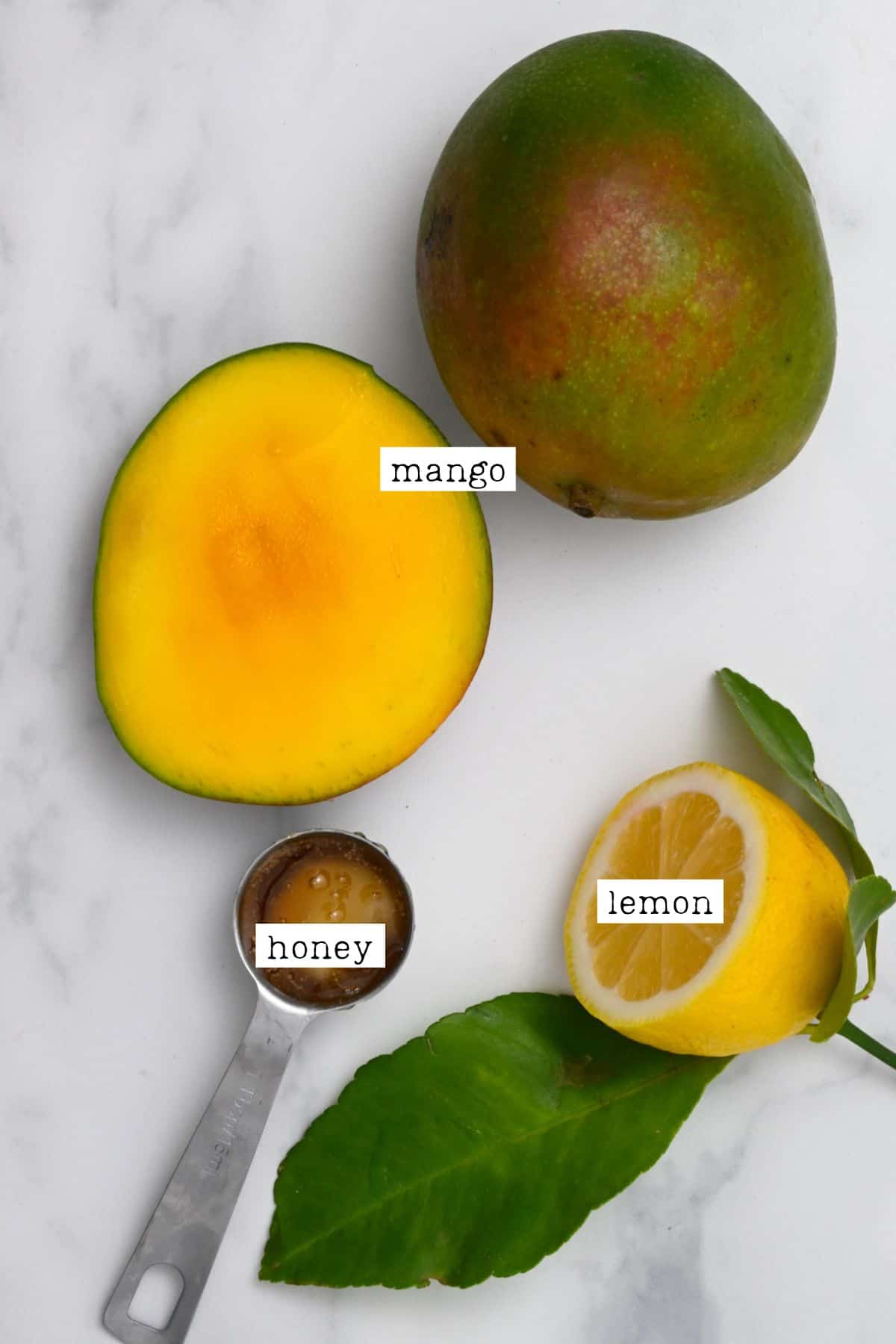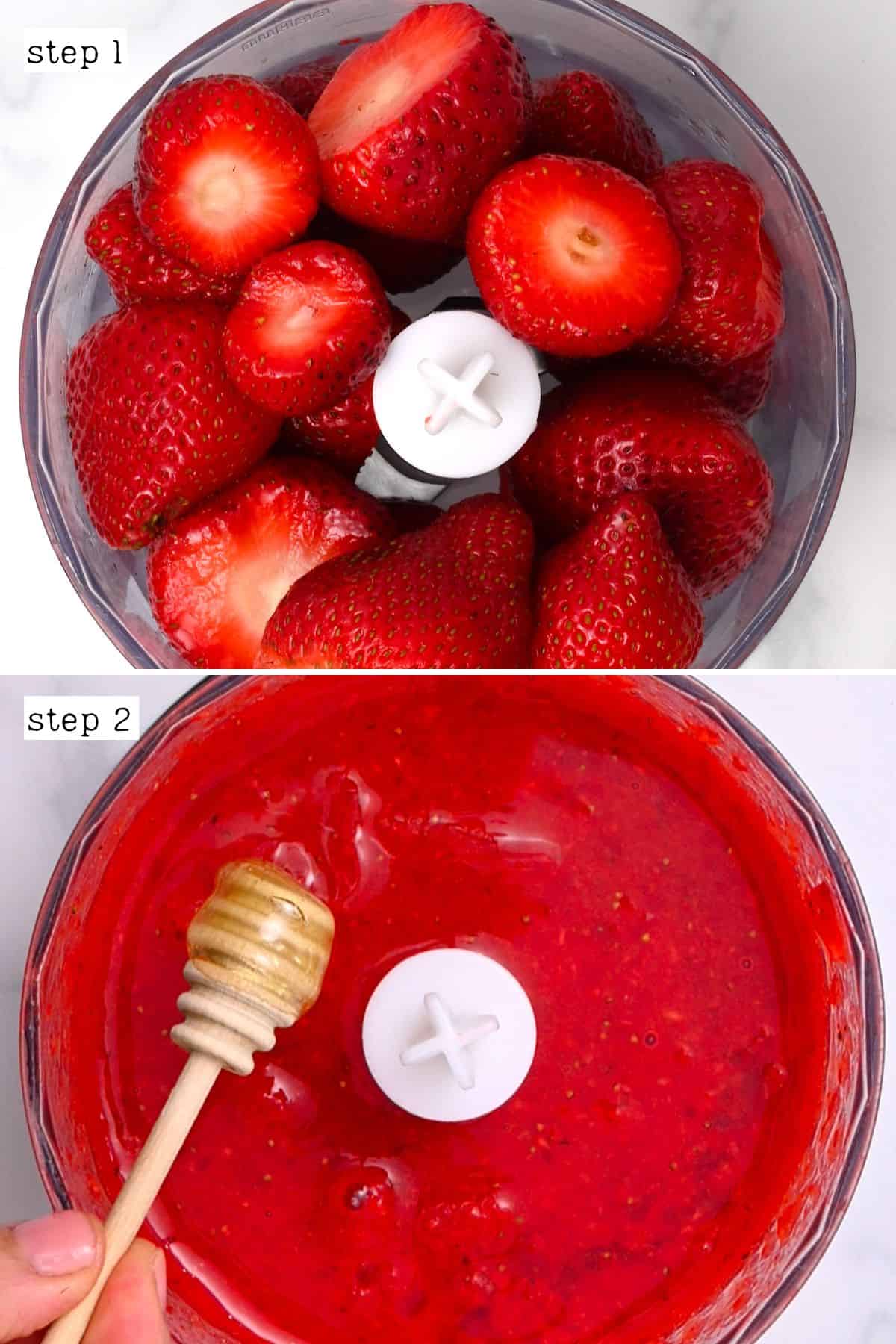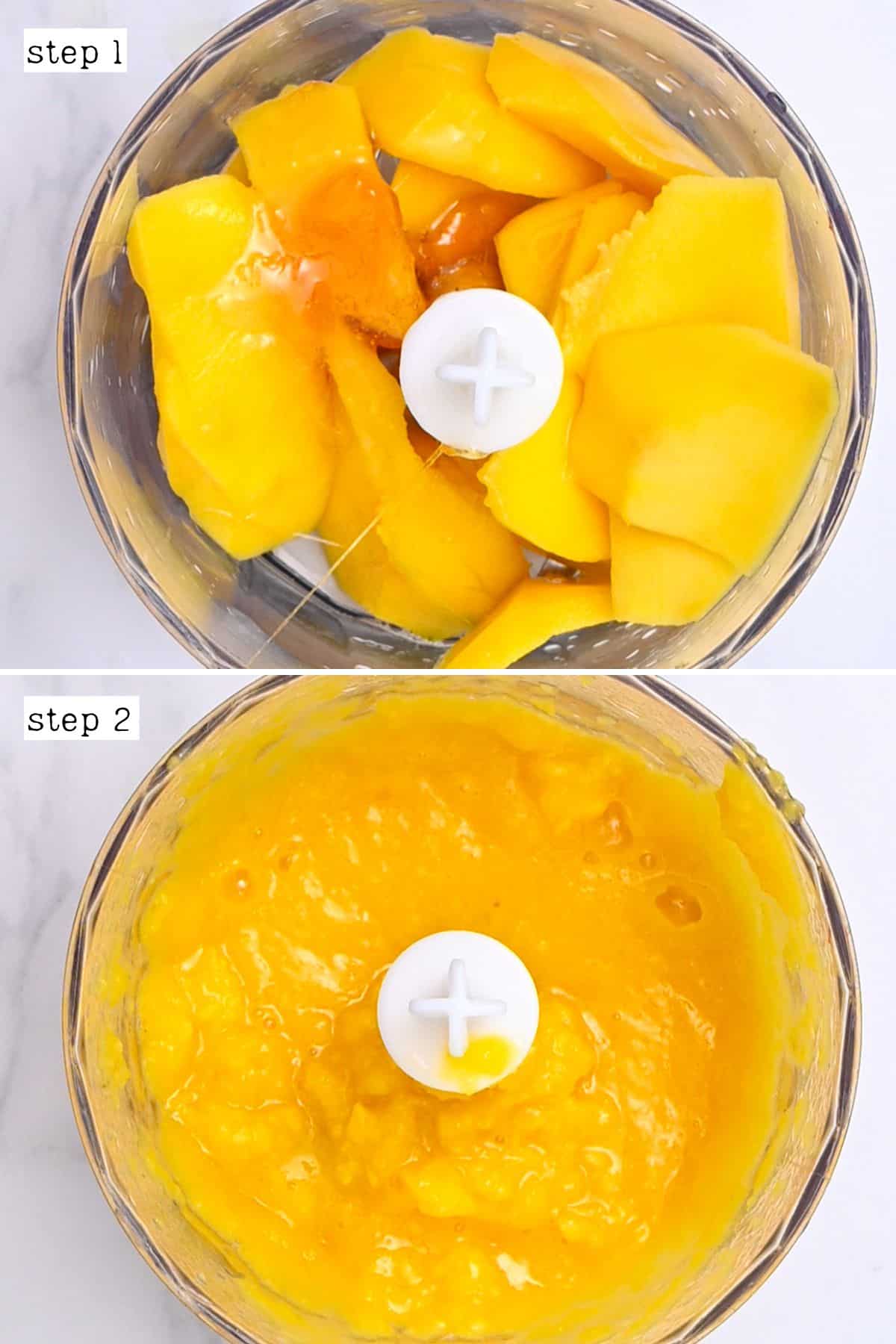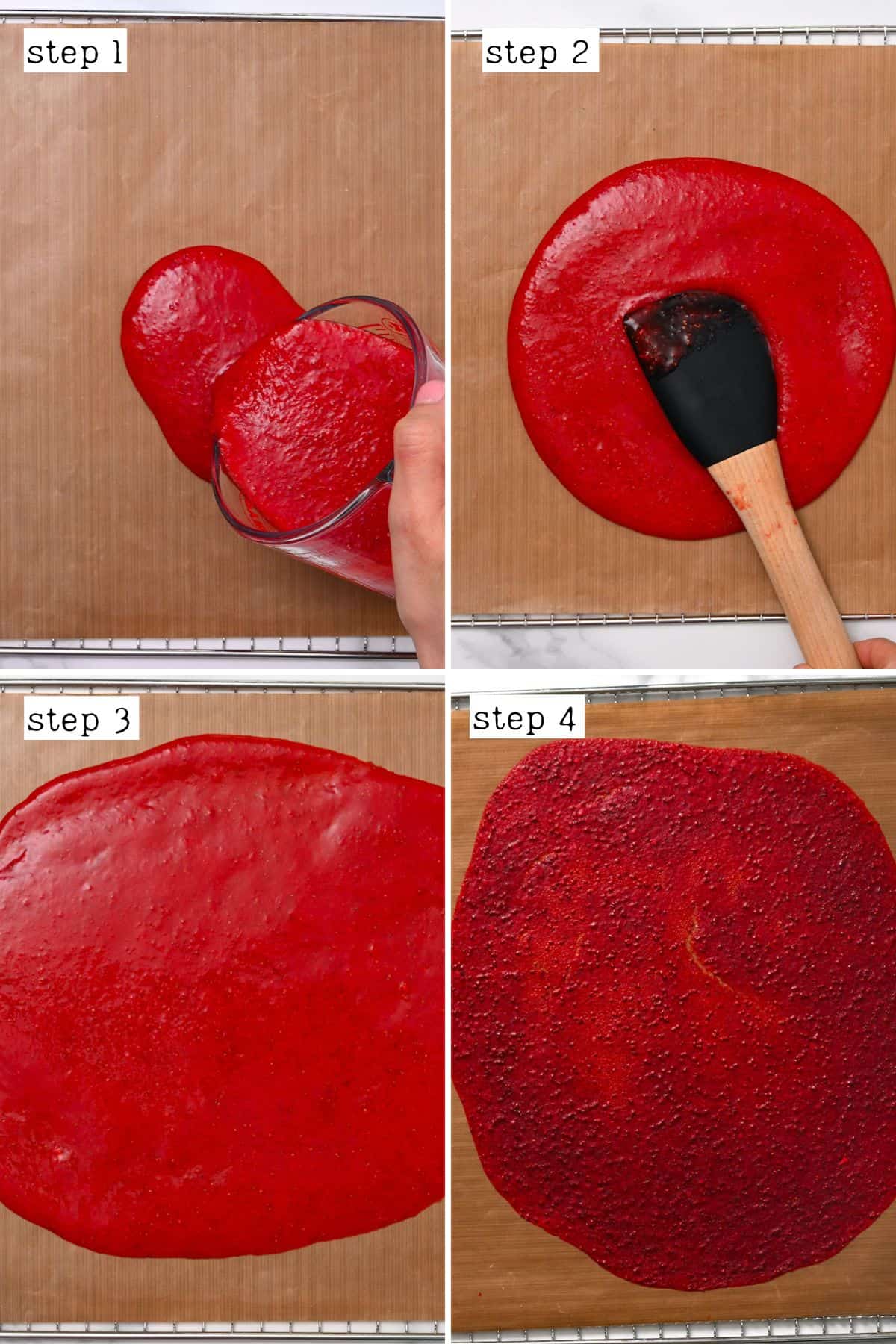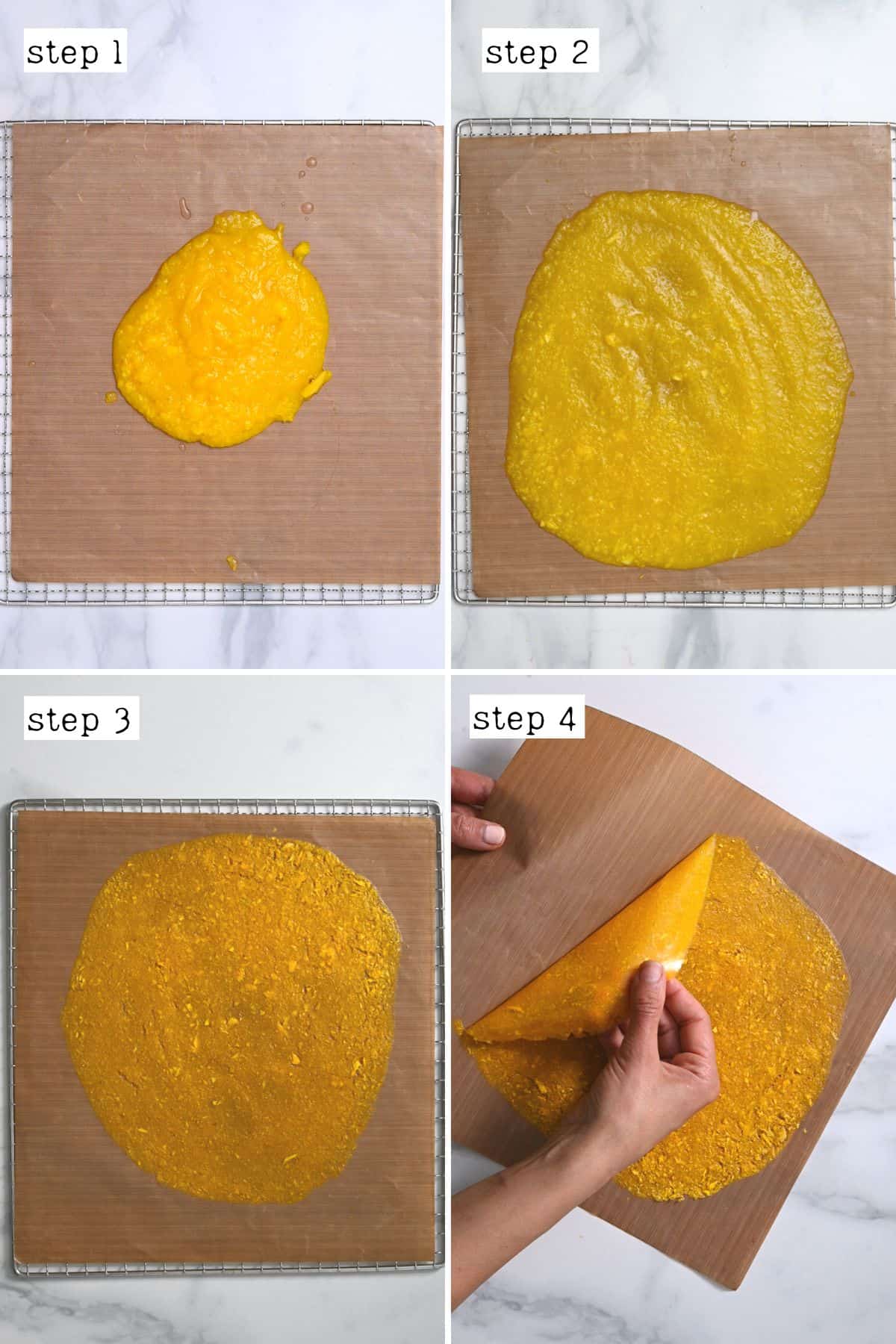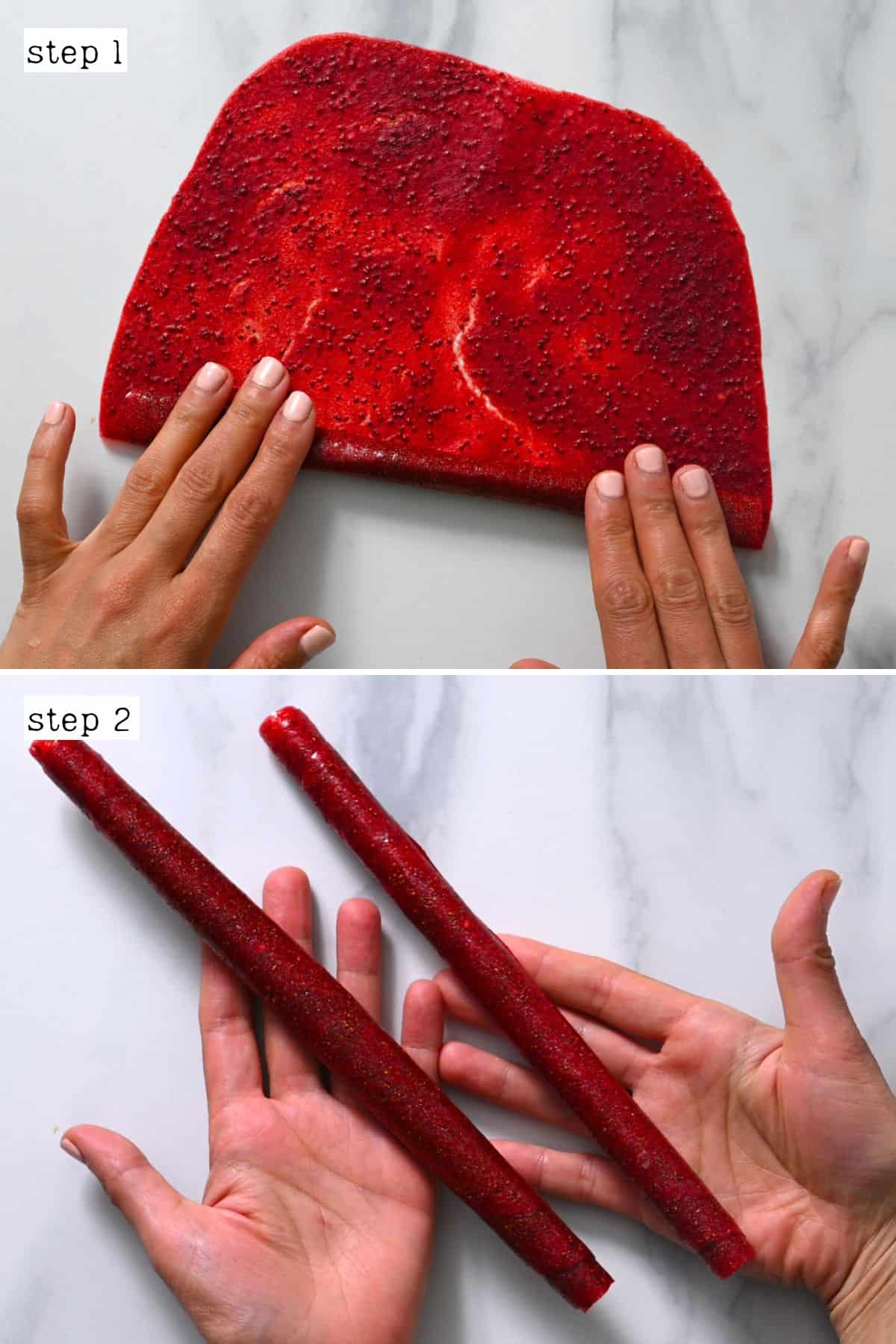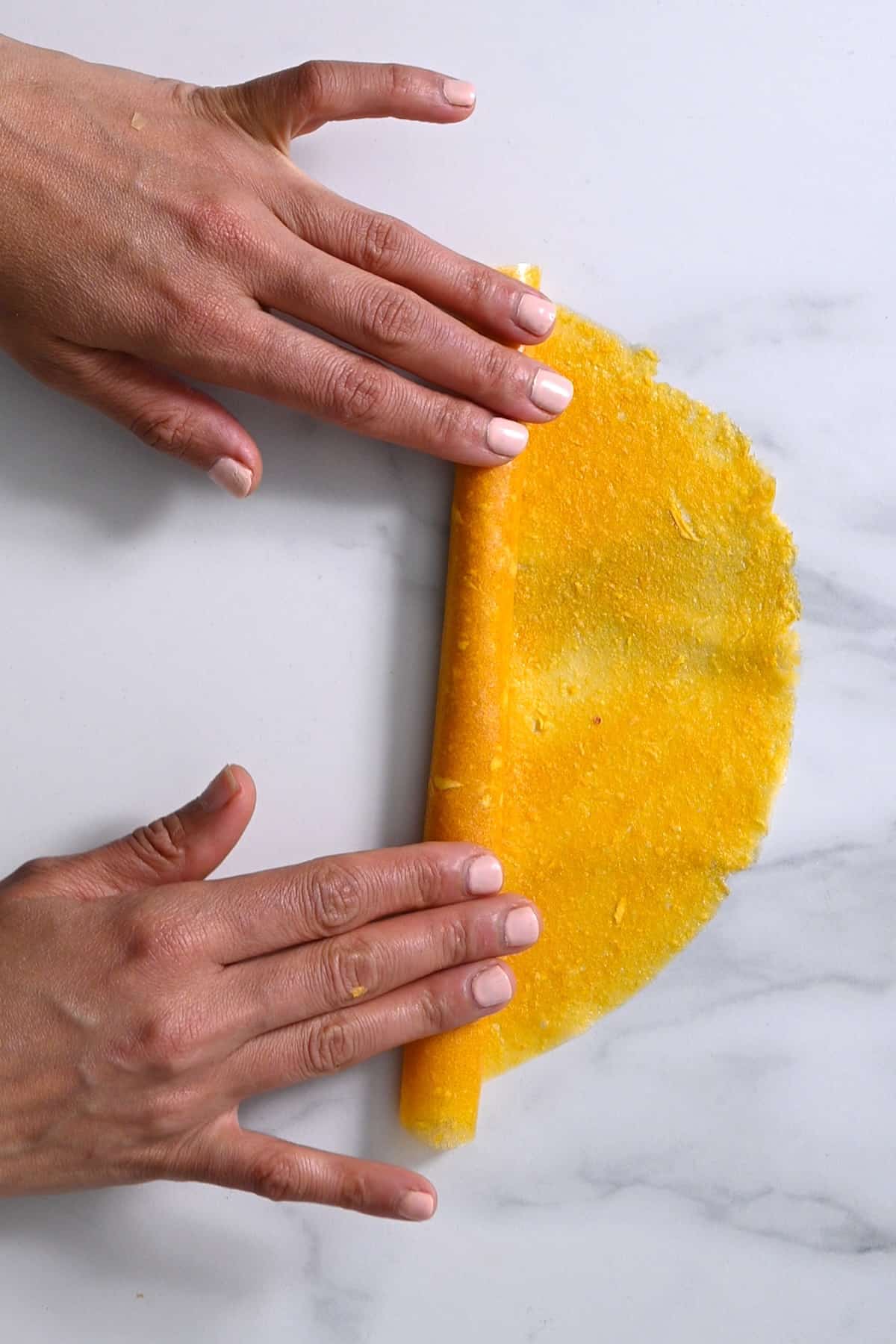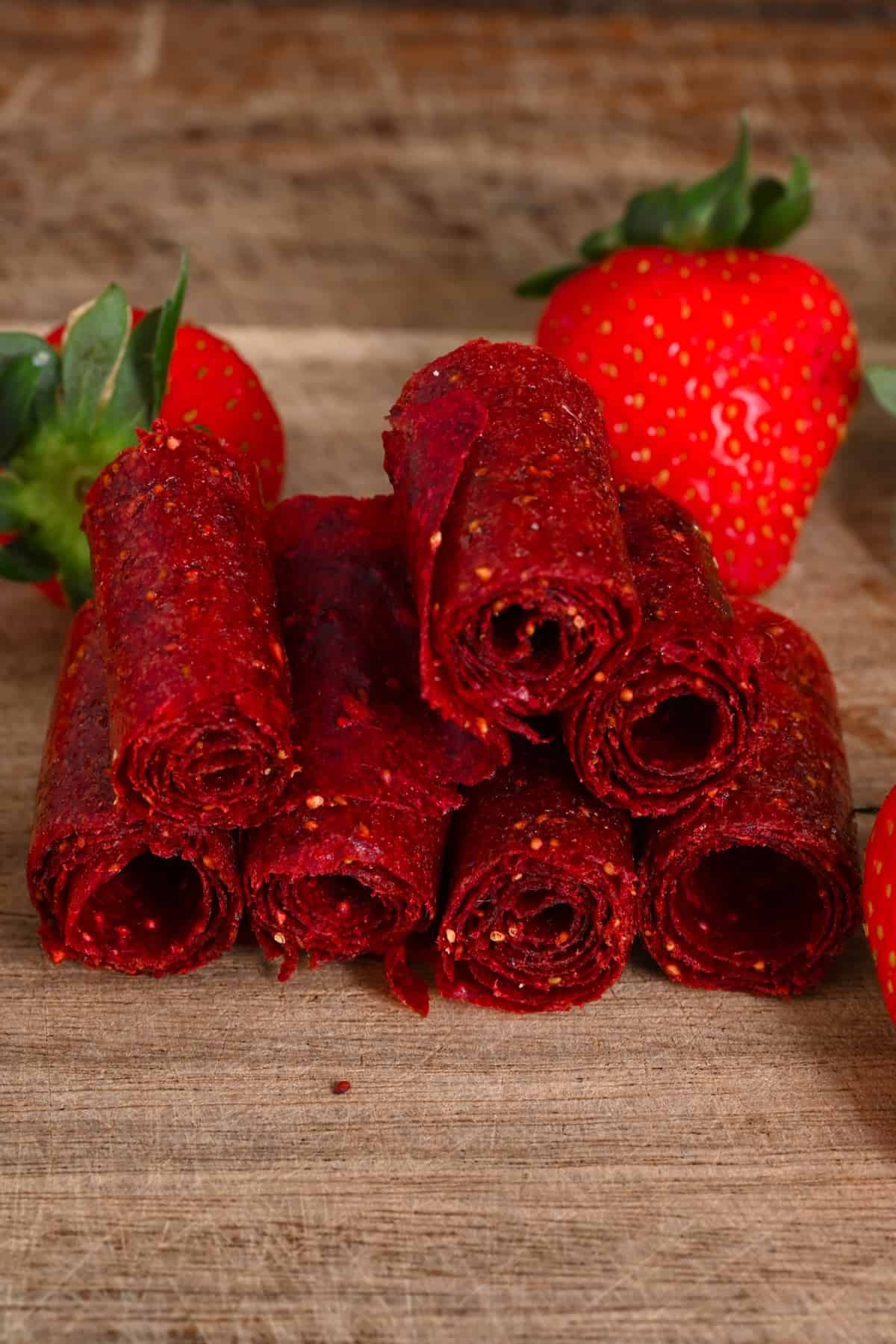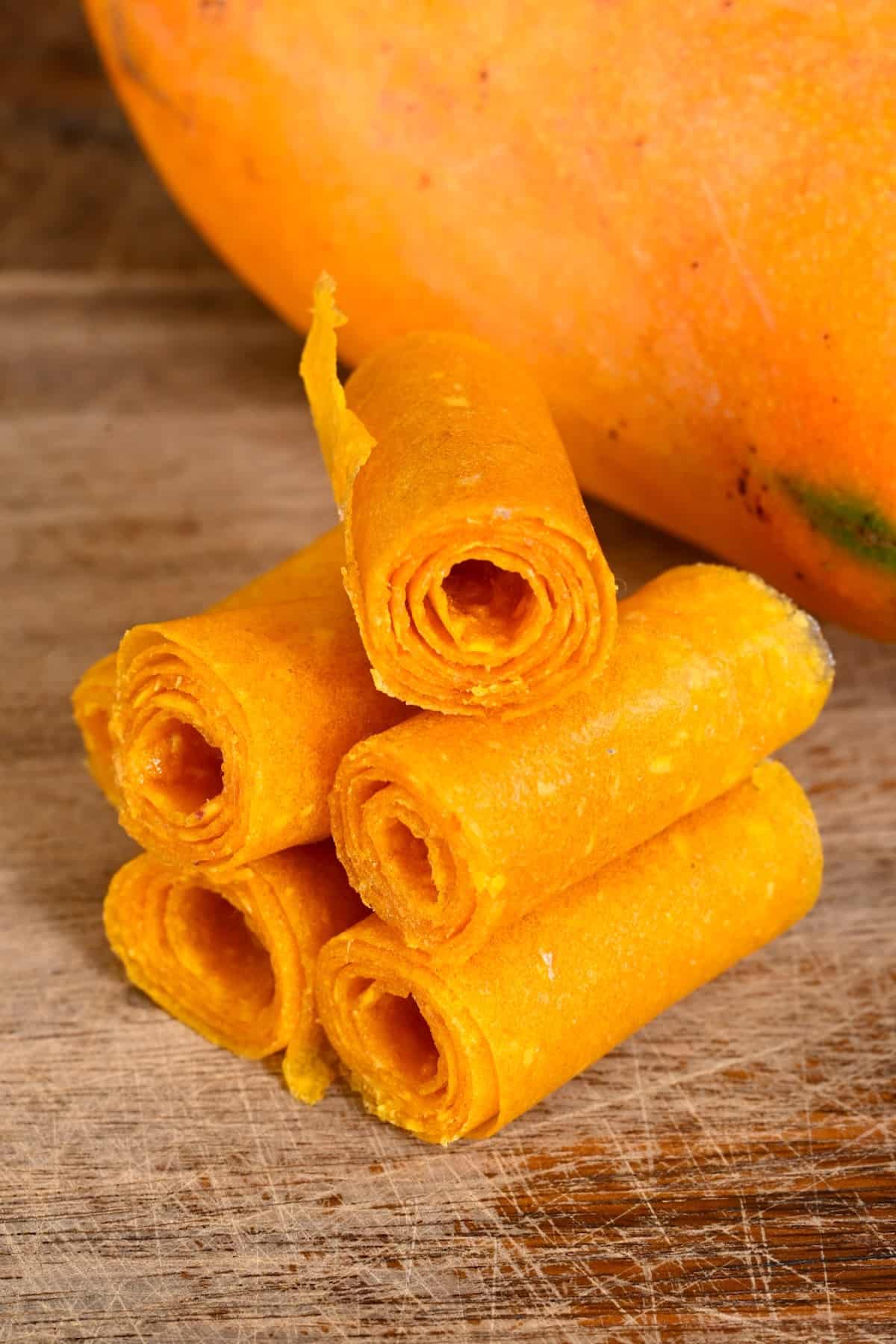As someone who rarely finds a moment to sit still, I love having healthy snacks that I can just grab and go when needed, like fruit and nut bars, turmeric energy balls, and these healthy homemade fruit leather strips/fruit roll-ups. They require just 2 ingredients – blended fruit and lemon juice (3 if you want to add a little sweetener). The ingredients are mixed, spread across a tray, and then dehydrated in an oven or dehydrator until dry, flexible, and delicious. And, unlike store-bought versions of fruit roll-ups or fruit gummies, these homemade ones are free from dyes, chemicals, refined sugars, and more additives. Instead, it’s JUST fruit. You can’t get more natural than that! Even better, learning how to make fruit roll ups at home will help save you money, AND it’s super versatile too. I mean, did you know you can make almost any fruit into fruit leather? Or you can sugar-glaze them and turn them into tanghulu candied fruit. You will love it either way! Not just that, but you can combine fruits too and discover unique flavor combinations with each batch. How about strawberry peach leather, almond cherry, or strawberry rhubarb? The sky is the limit when making this healthy snack! Want more ways to enjoy fruits? I love getting in fruits with my morning smoothies. As we inch towards summer, you might also enjoy this homemade watermelon shaved ice or grilled peach salad.
Is Fruit Leather The Same As Fruit Roll Ups?
Yes and no. Fruit leather and fruit roll ups both use similar ingredients and methods to prepare. However, the leather version is cut down into small pieces rather than rolled, which means it is often thicker. You can use the method below to make dehydrated fruit leather or rolls. Simply start with a thicker layer of fruit puree to start the dehydration process when making the leather vs a thin layer for the roll-ups.
Homemade Fruit Leather Ingredients
Fruit puree: There are several types of fruit leather you could make: Strawberries Mango Blueberries Raspberries, blackberries, and other berries Apricot Apple (use applesauce) Kiwi Peaches Pineapple Plum Rhubarb, etc.
You can use fresh or frozen fruit but make sure to thaw it first. Also, note that certain fruits, like bananas, will discolor and turn an odd brown color. For that reason, I like to mix them with other fruits but don’t often use them alone.
Lemon juice: Use fresh lemon juice for the best results. This will help the fruit maintain its bright color. Sweetener: (Optional) Only add enough to reach your desired sweetness. Use your favorite liquid sweetener – maple syrup, honey, agave, etc. Use a sugar-free syrup, if preferred, or unsweetened applesauce to naturally sweeten it.
I don’t recommend using granulated sugar in this recipe, as it won’t dissolve properly into the puree (unless it’s heated to dissolve it).
How to Make Fruit Leather/Rolls
I decided to make homemade strawberry rolls and mango rolls this time, but the below process will work with any of the fruits previously listed.
Step 1: Prepare and Blend the Fruit
First, blend your fruit of choice into a puree using a blender or food processor until smooth. If you want to make a multi-fruit version, blend the fruits separately and combine them half and half on the tray before dehydrating/oven-baking them. Then, add the lemon juice and optionally any liquid sweetener to taste.
Step 2: Spread
Spread 1 cup of the fruit mixture across a large Silpat or parchment-lined baking tray (don’t use wax paper) or dehydrator tray in a thin layer of around 1/8 inch (0.3cm). You can tilt the tray and/or use an offset spatula to help spread it in an even layer across the tray.
Step 3: Dehydrate the Fruit
Dehydrator Fruit Leather
Set your food dehydrator to 140ºF/60ºC and allow it to dry for between 7-12 hours until it’s dry.
Oven Fruit Leather
The aim here is to set your oven temperature as low as it can. 135-150ºF/57-65ºC is ideal, though up to 170-180ºF/75-80ºC will work too. Avoid any temperatures above 200ºF/95ºC, though. The time to make fruit leather in oven will vary based on the temperature and how thick your fruit puree is on the tray. As a general guideline, expect it to take between 8-12 hours at 140ºF/60ºC, 5-8 hours at 150ºF/65ºC, and 3-5 hours at 170ºF/75ºC. If the oven doesn’t go low enough, prop the end of a wooden spoon in the door to keep it slightly open. How do you know when it’s ready? It should look and feel dry (or very subtly tacky but not sticky) and it should be pliable. Make sure not to dry/cook them for too long, otherwise, they will become crispy/won’t roll.
Step 4: Cut and Roll the Homemade Fruit Leather
First, allow the dehydrated fruit to cool completely to room temperature. Then, use scissors, a pizza cutter, or a knife to cut into strips or squares. Alternatively, to make the rolls, cut the fruit into 1-inch strips and then roll them (fruit on the outside) while still connected to the parchment paper. If you dehydrate them on Silpat, peel them away from the sheet first and place them on parchment paper/wax paper before rolling. Enjoy your tasty, healthy fruit snack! As well as enjoying these homemade fruit roll ups as a snack, you can also use them, cut into pieces, as a nori alternative to make dessert sushi!
How Long Does Homemade Fruit Leather Last?
Store: Store in a paper towel-lined airtight container in a cool, dark, dry location for around 2 weeks or in the refrigerator for 1-2 months (it may last longer, but I’ve never tried). Freeze: Place in an airtight container or freezer-safe Ziplock and store for up to a year!
More Dehydrator Recipes
Dried Strawberries Sun-Dried Tomatoes
If you try this fruit leather recipe, let me know how it goes in the comments below. I’d appreciate a recipe card rating and would love to see your recipe recreations – tag me on Instagram @Alphafoodie!


